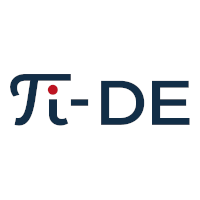E3.2 – Modelling disorder effects into ordered structures
Principle Investigator: Prof. Stefan Grimme
During the first TIDE cohort we developed a multiscale computational strategy to model the charge transport mechanisms in complex organic functional materials. By coupling MD, DFT and kMC simulations, we modelled the charge transport processes for an extended library of merocyanine single crystals, and we compared the computed hole mobilities with the available experimental data. The study, published on J. Mater. Chem. C [1], reflects the close collaboration between the TIDE projects E3.1 and D2.1.
At the same time, the impact of static disorder effects (e.g., morphological and energetic disorder) on the charge transport properties were introduced by modelling the transition from ordered (crystal) to disordered (amorphous) phases, and by introducing polarisation effects on the site energies. The study was performed on a series of redox based organic materials and the computational data were compared with the experimental measurements. The investigation was recently published on J. Mater. Chem C [2] as a result of the close collaboration between the TIDE projects E3.1 and D2.1.
Finally, we recently introduced a computational method for the efficient (fast and accurate) calculation of the electronic coupling integrals for charge transport. The method is based on the dimer projection approach via a density matrix tight-binding potential (called DIPRO@PTB). Such theoretical study is a joint contribution between the TIDE projects E1.1 and E3.1.
The project of the second cohort, research activity will involve the modelling of the structural and transport (i.e., charge and energy) properties in highly ordered organic semiconducting films via quantum-chemical (e.g., DFT, post-HF and semi-empirical methods) and atomistic modelling (e.g., MD and Monte Carlo) simulations. Final goals will be the modelling of the structural, energetic and thermal disorder effects (i.e., local and non-local electron-phonon couplings) onto the charge and energy transfer dynamics in ordered (templated) organic materials.
This project is a joint collaboration with Prof. Daniele Fazzi.
References
[1] Understanding the structural and charge transport property relationships for a variety of merocyanine single-crystals: a bottom up computational investigation. N. Gildemeister, G. Ricci, L. Boehner, J. M. Neudooerfl, D. Hertel, F. Wuerthner, F. Negri, K. Meerholz and D. Fazzi, J. Mater. Chem. C, 2021, 9, 10851-10864.
[2] Revealing the interplay between the structural complexity of triphenylamine redox derivatives and their charge transport processes via computational modeling. R. Herzhoff, F. Negri, K. Meerholz and D. Fazzi, J. Mater. Chem. C, 2023, DOI: 10.1039/d3tc02206d
[3] Efficient Calculation of Electronic Coupling Integrals with the Dimer Projection Method via a Density Matrix Tight-Binding Potential. J. T. Kohn, N. Gildemeister, S. Grimme, D. Fazzi, A. Hansen, J. Chem. Phys., 2023, just accepted
The ideal candidate is familiar with the use of quantum-chemical and first-principle electronic structure methods (e.g., DFT/TD-DFT, post-HF and semi-empirical tight-binding (e.g., xTB) approaches), as well as with molecular dynamics (MD) and kinetic-Monte Carlo (kMC) simulation techniques. Master degree in Chemistry, Physics, Materials Science or any related fields is required. Basic skills in programming (e.g., python, C++) and molecular/materials simulations are welcome, as well as good command of the English language.
The place of work will be the Institute of Physical Chemistry (Department of Chemistry) at the University of Cologne.
